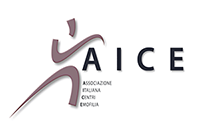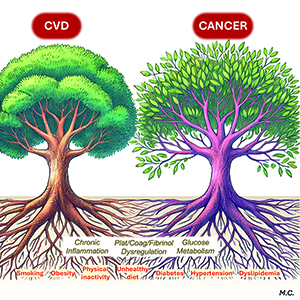Coagulome and tumor microenvironment: impact of oncogenes, cellular heterogeneity and extracellular vesicles

Submitted: 8 January 2024
Accepted: 22 March 2024
Published: 16 May 2024
Accepted: 22 March 2024
Abstract Views: 346
PDF: 135
Publisher's note
All claims expressed in this article are solely those of the authors and do not necessarily represent those of their affiliated organizations, or those of the publisher, the editors and the reviewers. Any product that may be evaluated in this article or claim that may be made by its manufacturer is not guaranteed or endorsed by the publisher.
All claims expressed in this article are solely those of the authors and do not necessarily represent those of their affiliated organizations, or those of the publisher, the editors and the reviewers. Any product that may be evaluated in this article or claim that may be made by its manufacturer is not guaranteed or endorsed by the publisher.
Similar Articles
- Ronda Lun, Deborah M. Siegal, Cancer-associated ischemic stroke: current knowledge and future directions , Bleeding, Thrombosis and Vascular Biology: Vol. 3 No. s1 (2024): 12th ICTHIC
- Yishi Tan, Marc Carrier, Nicola Curry, Michael Desborough, Kathryn Musgrave, Marie Scully, Tzu-Fei Wang, Mari Thomas, Simon J. Stanworth, Cancer complicated by thrombosis and thrombocytopenia: still a therapeutic dilemma , Bleeding, Thrombosis and Vascular Biology: Vol. 3 No. s1 (2024): 12th ICTHIC
- Luca Barcella, Chiara Ambaglio, Paolo Gritti, Francesca Schieppati, Varusca Brusegan, Eleonora Sanga, Marina Marchetti, Luca Lorini, Anna Falanga, Long-term persistence of high anti-PF4 antibodies titer in a challenging case of AZD1222 vaccine-induced thrombotic thrombocytopenia , Bleeding, Thrombosis and Vascular Biology: Vol. 2 No. 2 (2023)
- Marcello Di Nisio, Matteo Candeloro, Nicola Potere, Ettore Porreca, Jeffrey I. Weitz, Factor XI inhibitors: a new option for the prevention and treatment of cancer-associated thrombosis , Bleeding, Thrombosis and Vascular Biology: Vol. 3 No. s1 (2024): 12th ICTHIC
- Agnes Y.Y. Lee, Venous thromboembolism treatment in patients with cancer: reflections on an evolving landscape , Bleeding, Thrombosis and Vascular Biology: Vol. 3 No. s1 (2024): 12th ICTHIC
- Mehrie H. Patel, Alok A. Khorana, New drugs, old problems: immune checkpoint inhibitors and cancer-associated thrombosis , Bleeding, Thrombosis and Vascular Biology: Vol. 3 No. s1 (2024): 12th ICTHIC
- Gary E. Raskob, Risk of recurrent venous thromboembolism in cancer patients after discontinuation of anticoagulant therapy , Bleeding, Thrombosis and Vascular Biology: Vol. 3 No. s1 (2024): 12th ICTHIC
- Maria J. Fernandez Turizo, Rushad Patell, Jeffrey I. Zwicker, Identifying novel biomarkers using proteomics to predict cancer-associated thrombosis , Bleeding, Thrombosis and Vascular Biology: Vol. 3 No. s1 (2024): 12th ICTHIC
- Ang Li, Emily Zhou, Trends and updates on the epidemiology of cancer-associated thrombosis: a systematic review , Bleeding, Thrombosis and Vascular Biology: Vol. 3 No. s1 (2024): 12th ICTHIC
- Rushad Patell, Jeffrey I. Zwicker, Rohan Singh, Simon Mantha, Machine learning in cancer-associated thrombosis: hype or hope in untangling the clot , Bleeding, Thrombosis and Vascular Biology: Vol. 3 No. s1 (2024): 12th ICTHIC
You may also start an advanced similarity search for this article.

 https://doi.org/10.4081/btvb.2024.109
https://doi.org/10.4081/btvb.2024.109










